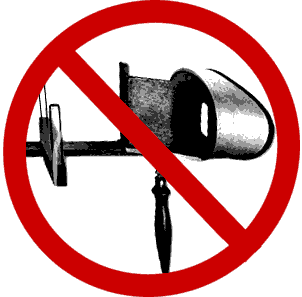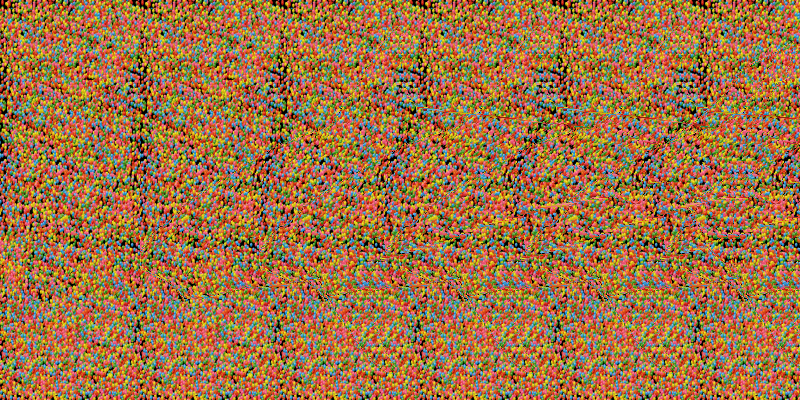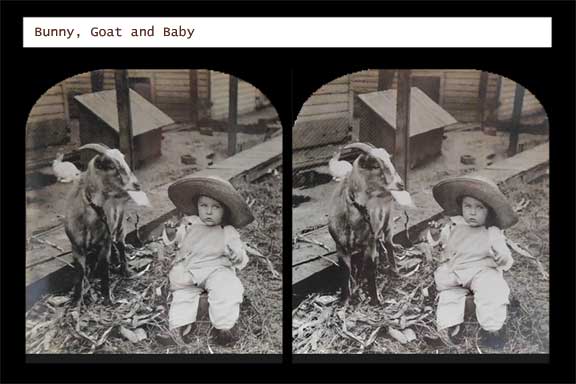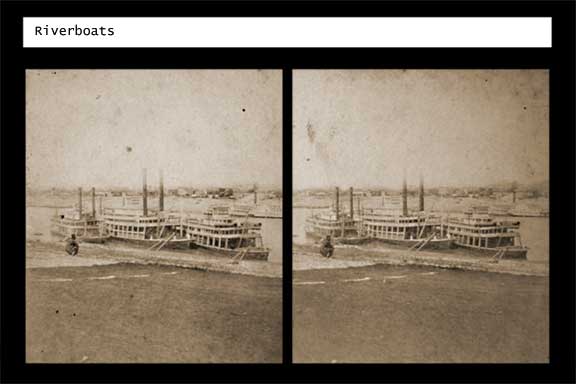Freeviewing the Internet - 3D Adventures Await
- Monday, August 11 2014 @ 10:42 am UTC
- Contributed by: masodo
- Views: 11,296

 Stereoscopic vision is one of those miracles of the human condition that is all too often taken for granted. If you are fortunate enough to have two functioning eyes then you posses the ability to view the world in three dimensions and thereby have the tools required for depth perception.
Stereoscopic vision is one of those miracles of the human condition that is all too often taken for granted. If you are fortunate enough to have two functioning eyes then you posses the ability to view the world in three dimensions and thereby have the tools required for depth perception.
When you look at a single object with two eyes you are actually presenting your brain with two separate images that it must meld into one. The average difference in eyeball separation is only 2-1/2" to 3" but that is all it takes to discern depth in three dimensional space.
 Not very long after the invention of photography it was realized that if two photographs were taken of a single object with the same separation as the human eyes, these two images could be used to relay a three dimensional view to an individual via the use of a device known as a stereo-graph or stereoscope. The stereoscope would accept precisely mounted images (or view cards) on one end and the user of the device would peer through a couple of magnifying lenses (one for each eye) and would be treated to a picture set that would trick the mind into melding and interpreting as if the viewer were standing at the original camera location. The result was so awe inspiring and entertaining that "Stereopticons" (as these viewers were sometimes called) became a sensation. As a result of their popularity a grand industry arose whereby anything worth photographing was photographed in stereo and marketed to the connoisseurs of this fascinating pastime.
Not very long after the invention of photography it was realized that if two photographs were taken of a single object with the same separation as the human eyes, these two images could be used to relay a three dimensional view to an individual via the use of a device known as a stereo-graph or stereoscope. The stereoscope would accept precisely mounted images (or view cards) on one end and the user of the device would peer through a couple of magnifying lenses (one for each eye) and would be treated to a picture set that would trick the mind into melding and interpreting as if the viewer were standing at the original camera location. The result was so awe inspiring and entertaining that "Stereopticons" (as these viewers were sometimes called) became a sensation. As a result of their popularity a grand industry arose whereby anything worth photographing was photographed in stereo and marketed to the connoisseurs of this fascinating pastime.
To this day there continues a very active community of Stereoview enthusiast. An internet image search using the word "stereoview" will send you into an incredible World of 3D photography to an extent that borders on the unbelievable.
To those of us that have mastered the art of freeviewing stereo pairs the internet now offers the ability to see back in time and far away places. You too can enjoy this hidden treasure trove by learning the technique known as freeviewing, which is the ability to render stereo pairs in glorious 3D in your minds eye without the use of a stereo-graph device of any sort.
It is the purpose of this article to help impart the skill of freeviewing to the uninitiated in the hopes that you too will use this simple technique and enjoy this remarkable pastime - this window on the world of long ago - this time machine available at your fingertips.
So what's the secret? [Continue]
A little bit of patience is required to get the hang of freeviewing but once you figure it out it will become so easy you'll wonder why everyone does not enjoy this sport. Relaxation is the key to effective mastering of the skill. This fact in itself results in practitioners of freeviewing often commenting on how calming this pastime can be.
The way it works is this: rather than having your eyes converge on a single spot (looking at the same thing) you must relax the muscles of the eyes so that each eye is looking directly straight ahead, so that each eye gets its own separate image to deliver to the brain, where these are magically merged into the three dimensional view.
Under normal circumstances the only time eyeballs are both looking perfectly straight ahead is when you are looking at very distant objects (mountains, sunrises, the Moon, stars, clouds etc...) At times like these your eyes are effectively using parallel lines of sight; hence freeviewing is often referred to as parallel viewing.
There are other times when eyes will assume parallel lines of sight, most commonly when one becomes tired. It is actually the movement of the eyes into these parallel tracks that is responsible for blurred and/or double vision. This condition can also be achieved through medicinal or chemical means but that is not necessary or advisable for the maximum enjoyment of freeviewing stereo pairs.
To understand the principle behind the technique you can try looking at a distant object and introduce a vertically held pencil (or finger) into the field of view a foot or so in front of your face. If you do not allow your eyes to focus their gaze on the pencil your mind will suggest that there are two pencils before you. It is that little trick that will be utilized in the creation of the 3D image in our mind's eye when looking at stereo pairs.
I have created the following image for the purpose of training your eyes to view in parallel on demand. When you look at it normally you will see a gray rectangle on the left and a white rectangle on the right. These shapes are separated by a space roughly equivalent to the distance between your eyeballs. You can imagine that if each eye were looking straight ahead then the Gray shape would be directly in front of the left eye and the white shape would be directly in front of the right eye.

As you relax your gaze and allow your eyes to assume the comfortable condition of parallel alignment the above image will appear to undergo a transformation that is approximated in the animated graphic presented below. Notice how the two shapes seem to transform into three shapes; the central one actually being a combination of the existing two. This third shape exists only in your mind. When you properly freeview a stereo image you will see this same behavior. It will look as though there are three copies of the photo but you simply disregard the outer two versions and concentrate your mind on the central creation. With practice you will see the full three dimensional effect and will soon learn how to shift your focus to the right distance without disrupting your parallel gaze.

As it turns out, this is exactly the same technique required to view those once very popular Random Dot Autostereograms (commonly referred to as "Magic Eye" images.) If you can view those you should have no trouble freeviewing stereo pairs. If you have trouble with the "Magic Eyes" you should find freeviewing an easier concept to grasp since you know what you are supposed to be looking at before you try to get the 3D effect (where with Magic Eye the image is usually a mystery until you finally get it to appear.)

Click Image above to view in proper scale for best results.
Trust me, there is no shortage of 3D images to see on the internet and you will find this new skill to be very rewarding indeed. Just remember to relax and breathe regularly. Remain mindful of the fact that the image you are viewing was made possible by a photographer who viewed the scene in person and thought it important enough to capture for the ages using the awesomeness that is Stereo Photography. So sit back, relax and enjoy those countless time capsules from a simpler time.
[tag:retro historical entertainment diy tips photography pictures educational musing strange random]

































 Them All!
Them All!














